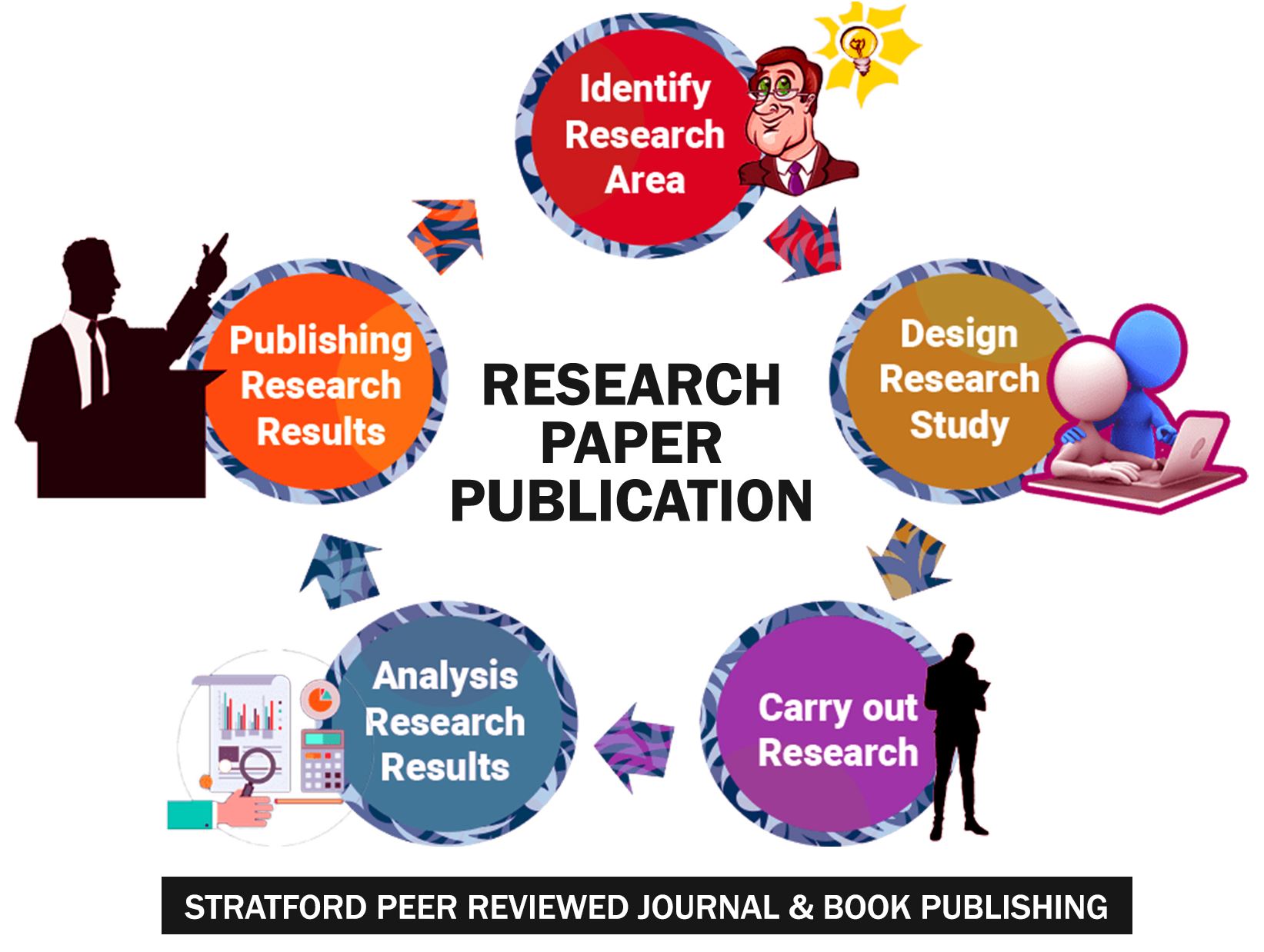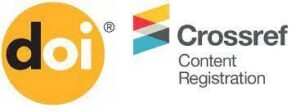
Research Paper Publication in the Information Era
Research paper publication is an inescapable undertaking by scholars and academicians passionate about their career advancement. The phrase ‘publish’ or ‘perish’ underscores the centrality of publishing scientific research papers in the current era of increased quest for information. There has been a rise in papers submitted to publishers over the years, yet most authors care little about the research paper publication process. Too many novice writers attempt to publish and fail because they are unaware of the five-step research cycle. A successful journal article process calls for caution and attentiveness in the process and carefully following each step. These steps include:
1. Identifying a research area
2. Designing the research study
3. Conducting research
4. Analyzing the research results
5. Publishing the research paper
All the steps in the research cycle must combine with a logical message to succeed in research paper publication. Even if a person prepares a satisfactory manuscript and their research process is carefully presented or if they lack something meaningful to say, publishers will reject their work. Therefore, success is only possible when an applicant passes through the entire publication procedure and if they have something significant to add to the field.
The importance of publishing a research paper
- Visibility
- Improve your work
- Impact
- Avoiding redundancy
- Career progress
Visibility: Publishing your work in a journal helps to enhance your visibility in the research field. You do not have to limit your reach to peers at work and socially. If you pick a reputable journal, it could make your work accessible to institutes, organizations, letterboxes, and institutes from all over the world. Therefore, if your goal is to maximize reach then publishing should be the way to go.
Improvement: If you wish to enhance the quality of your work, you should pursue publication. The peer-review process is a rigorous and effective way of reviewing the quality of your work. These are senior level editors, boards and practitioners who can provide valuable insights into an applicant’s work. Consequently, making your work publication-ready is critical in enhancing its quality.
Impact: Research impacts society positively. Some hot-button topics may need more insights from scientific processes. Subjects like nutritional costs of veganism, social media and mental illness, the impact of puberty blockers for transgender youth, or how gun ownership impacts school shootings need concrete evidence for understanding. Publishing helps the public to come to a rational and fact-based conclusion on these controversial issues. Policy makers, politicians, and practitioners can thus make a healthy decision when doing their work.
Redundancy: The problem of redundancy is quite a common one in research paper publications. Too many writers add nothing to their fields. They waste precious resources on research that other people have already done. Even though it may always be possible to publish entirely new work, since some research can be building from other people’s efforts, it is important to make sure that you are not replicating work.
Career progress: If a person is in the academic field, they may have targets on publications. If a person has many publications under their name, their prospects for tenure are likely to increase. Alternatively, the profession may require constant research updates. Career progress thus goes hand in hand with research publications.
The Research Cycle for Research Paper Publication
1. Identifying a research area
The most impactful decision you could make is deciding what area you will be addressing. Do not take this decision lightly as it might ruin your chances of publication. Instead of limiting yourself to the pervasive dogma in your field, use creative thinking
- Brainstorm
- Read other disciplines and conduct a literature review
- Partner up
- Ask why
- Discuss it
- Make visuals
- Interests
When picking a research topic. Reflect about various ideas. Write them down even if they do not seem to make sense.
Engaging material outside your discipline and academic field helps to open your mind. Question assumptions and discard presuppositions. Conduct a thorough literature review too.
Alternatively, collaborate with someone to think of a research topic. They do not have to be from your discipline. It can be someone who would find value in the topic. If they perceive it as rational and logical then you should proceed to consider it.
Asking why throughout the discovery process helps you challenge stereotypes. You may also ask another person to ask the same so that they can effectively find the most significant solutions for it. Talk it out with another person and think of details like where, why, and who. Sometimes you may think you know something but when you discuss it, it can open up certain missing elements.
Visuals are an effective as of visualizing concepts. It helps to beaks down complex ideas into something easy to understand. Draw out the issues and other correlated aspects.
Your personal interests can provide clues on the research areas. These ideas could be in a previous research area or they may come from another phase of life. If you pick a topic you are interested in, you are more likely to stick it out when it became tedious and uninteresting.
After pinning down one idea, from the above, research paper publications is likely to increase if you also consider some aspects of feasibility. These include:
- Demand: If the topic is in demand, then there is a strong incentive for you to gather data about it.
- Practicality: determine how likely you are to deliver on the research in terms of the time it takes, commitment, resources or other constraints. Trying to conduct a survey among all hospitals in the country may not be logistically practical.
- Integration: Sometimes the intervention you are thinking of might need to integrate with other processes and programs. The changes in the physical or social environment may make it unfeasible.
- Expansion: On some occasions, an intervention may have worked for certain populations, so taking it to a different setting may warrant a new research study.
- Acceptability: The intervention could have positive or negative reactions from the population. Consider how to alleviate this resistance before you start.
2. Designing the research
Six aspects of methodology can dictate what sorts of design you will use. These can include:
- The lab or real world
- Single or multiple dependent variables
- Controlling variables or include all
- Fixed methods or flexible
- Hypothesis testing or profile development
- Co-participant or experimenter
You must make decisions about all these aspects before you craft your design. Your topic often dictates the research study. Broadly speaking, research could be qualitative or quantitative. It is quantitative if you measure and analyze numerical data to understand variables relationship. It is qualitative if you want to understand experiences or perspectives.
The laboratory setting has advantages because it allows experimenters to remove all contaminants. Therefore, the deductions you make from the intervention may be devoid of confounding factors. On the other hand, field studies are more realistic because they occur in real life and are likely to be more truthful concerning society.
Controlling variables or including all variables may also be another choice. The former may involve eliminating the variable manually and creating an artificial setup.
Sometimes some researches may adapt a more iterative research design. As the experimenter conducts the work, they consider whether there are changes and alter their process. Conversely, others have fixed processes, materials and procedures and no changes are permissible. You may want to consider either of these based on your research objectives.
Other analyses involve hypothesis-testing or profile development. Hypothesis testing involves a more rigorous scientific process while profile development may be more flexible.
You may also want to choose between multiple or single dependent variables. The number of variables depends on the research question or the setting. Having awareness of the variables is essential in making design decisions.
Some researches involve the subject in making the sections. These studies are called co-participants because they realize the subjects’ experiences. On the other hand, most analyses entail the experimenter deciding what they will concentrate one.
3. Conducting the research
People conduct research by collecting data. Most research paper publications never make it because they pay minimal attention to this stage of the cycle. The type of data collection you choose will depend on the theory and the design you adopt. Most methods fall in these three categories:
- Direct observations: Coded observations, participant observations, narrative observations, and physiological observations
- Standardized or investigator instruments: Documents/ archival measures, standardized tests and content analysis
- Self-report measures: Focus groups, interviews, questionnaire surveys, personality scales, summated attitude scales.
Direction observations can be as detailed or as shallow as possible. In qualitative researches, observations tend to occur in natural setting while quantitative ones involve labs. Some observers may participate in the research while others may observe from a two-way mirror. The choices may depend on how unobstructed you want the study to be.
You may develop your own instruments or pick standardized ones depending on our commitment to validity and reliability. Standardized texts include those that have right or wrong answers including intelligence tests. A researcher could also come up with their own tests. Documents and archival analyses are other ways to conduct research.
Summated attitude (Likert) scales are those that measure people’s attitudes. Most self-report measures are quantitative for qualitative research.
4. Data analysis
Data analysis is how you evaluate the data you collect and it occurs right in the middle of the research paper publication cycle. In this phase, a researcher can have quantitative and qualitative research. Qualitative data analysis seeks to find themes and patterns in unstructured data such as conversations, texts or transcripts. Conversely, quantitative data manipulates statistical data to make predictions. Examples include:
- Regression analysis
- Monte carlo stimulation
- Factor analysis
- Cohort analysis
- Cluster analysis
- Time-series analysis
- Sentiment analysis
The data analysis process is also another cyclical process with the following steps.
- Data cleaning: Remove duplicates, extra data points, typos, and layout problems.
- Analysis: Using any of the above listed methods, you can categorize information.
- Visualizing: Present the data in a graphical manner like through charts, tables or graphs
5. Publishing
Guidelines
Every publisher has their own requirements for research paper publications. Familiarize yourself with their writers’ guidelines or instructions. The publication usually specifies its requirements for contents, charts, graphical material and the written content itself. Always read through the instructions thoroughly then prepare the manual according to those guidelines.
Cover letter
The editors will save a lot of time and the editor is less likely to reject the paper. It is necessary to send a cover letter on top of the article. The cover letter contains disclaimers and disclosures about copyright material. It also declares that the person has handed in original work.
After submitting the article, you then get acknowledgement from the editorial officers. However, if you do not get a response from the team after some weeks, consider sending them an email. After this slight passage of time, they will send a response on the study’s fate.
Revision
If the reviewers had comments and recommendations for revising the work then do it. Answer each question and comment even if they rejected the application. Seek clarification of remarks you do not understand from the editor. Always ask for advice on the general way of revising a paper.
Some editors may reject the paper. However, this does not have to be the final step. Take in all the editors and reviewers said then work on the paper. You may need to conduct the research fresh or alter certain parts of the research cycle like data collection and analysis. Once you refine the paper, you are free to resubmit to a different journal or the same one.
Appeal
In case of a dispute, there is also room for appeal. Some of the reasons for rejecting the manuscript may be erroneous. The reviewers could have misunderstood your ideas or misinterpreted them. Send an appeal with all the reasons why you think you deserve reconsideration.
Additional publication information
Alternatively, the publication may find your work satisfactory and thus accept it. The author must send copyright information and other additional steps are necessary. If the journal sells the publications, the author can still obtain some free copies if they make special arrangement. Always involve your coauthors in all steps of the publication process.
Summary
The process of research paper publication in the modern information era takes significant rigor and time. Missing out on one step could lead to unwanted steps in other areas. Therefore, you should endeavor to internalize each aspect of the publication process. Start with the research area and try to think outside the norm then proceed to the design which depends on several aspects like the researcher’s role and the settings. Conduct the research and collect data depending on your research questions. Analyze the results using systematic methods before submitting your research paper for publication.

